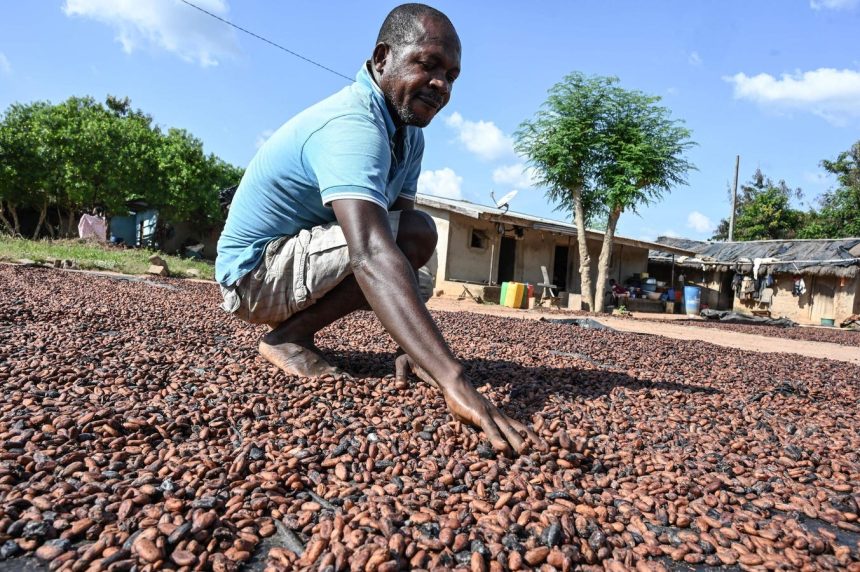A recent plunge in cocoa prices has caught the attention of market observers, traders, and, most crucially, the economies of Ghana and Ivory Coast, two countries at the epicenter of the world’s cocoa supply. Cocoa prices last traded in mid-March at around $7,175, after dropping about $1,700 per metric ton. This significant dip in cocoa market prices isn’t just a transient trend; it brings to light broader economic, environmental, and societal changes influencing the cost of cocoa and its impact on these key producing nations.
The Breakdown You Need To Know:
The latest coca price slide marked the largest single-day drop since at least 1980, reflecting a volatile period where prices had previously soared to record highs. Earlier in the year, cocoa futures had reached an unprecedented peak of $11,722 per metric ton due to a shortage of cocoa beans, influenced by supply disruptions like heavy rains and diseases.
Cocoa serves as a crucial pillar for the economies of Ivory Coast and Ghana, recently hitting prices of $10,000 per metric ton for the first time ever. These countries’ cocoa account for around 15% and 2-3% of their GDPs respectively. CultureBanx reported that fluctuating international cocoa prices pose a significant opportunity, impacting the livelihoods of countless individuals dependent on cocoa farming.
Ivory Coast and Ghana stand as the backbone of the global cocoa industry, with the former holding the title of the world’s top cocoa producer, contributing about 45% to the global supply, yet receiving a fraction of the chocolate industry’s vast annual worth. The Ivory Coast is ambitiously aiming to ramp up its production to 2 million tons by 2025, despite a projected 28.5% drop in the early 2023/2024 season due to adverse weather. Similarly, Ghana’s COCOBOD had to revise its production forecast down to 650,000-700,000 metric tons for 2023-24, marking a 14-year low.
Price Fluctuations:
The economic repercussions of fluctuating cocoa prices are profound in Ghana and Ivory Coast, where cocoa is a critical export commodity. In response to declining yields and international market volatility, both governments have intervened by raising farm gate prices significantly; in Ivory Coast by 50% and in Ghana by 58.26%. Despite these efforts, the local economies face challenges due to the dependency on cocoa exports, which affects the nations’ foreign reserves and impacts major trading firms.
J.P.Morgan stated cocoa prices are expected to remain elevated but may experience a slight decrease over the medium term, stabilizing around the $6,000 mark as global climate patterns potentially improve cocoa yields in major producing regions. However, structural challenges such as significant loss of cocoa trees and higher production costs related to sustainability concerns may prolong the period of high cocoa prices.
Situational Awareness:
Unfortunately, most cocoa farming families live in poverty, relying on cocoa for about two-thirds of their income. On the communal farms of Ivory Coast, the stark reality unfolds with millions of cocoa farmers making do on an average of just $0.78 a day.
As the cocoa markets continue to navigate through the tumultuous waves of price fluctuations, the impacts stretch far beyond the trading floors, deeply affecting the lives of farmers in Ghana and Ivory Coast, and resonating through global chocolate consumption patterns.
Read the full article here
















